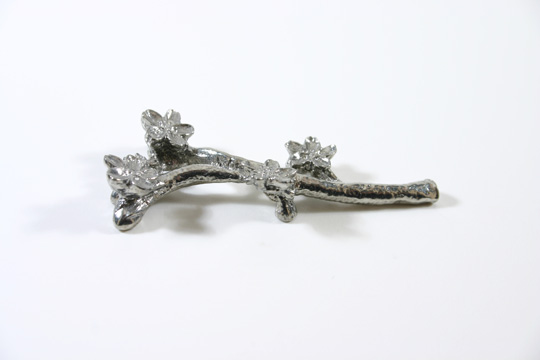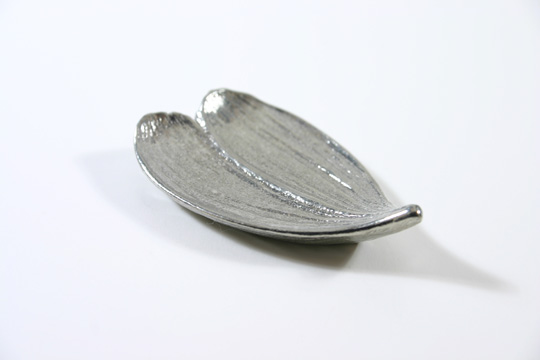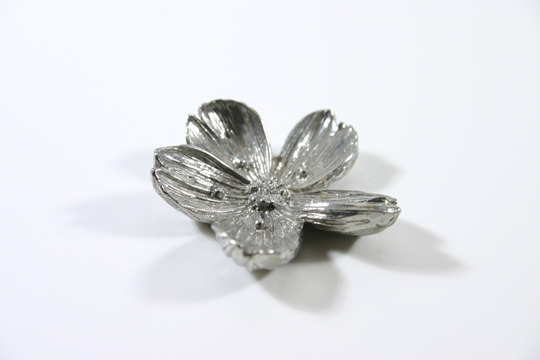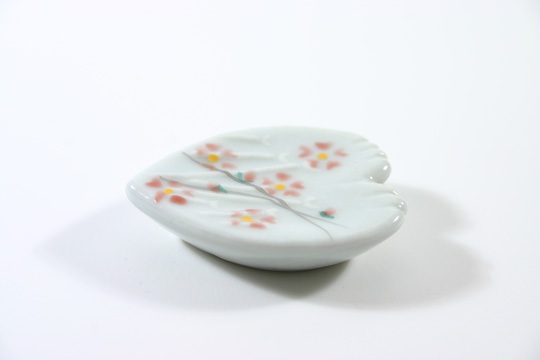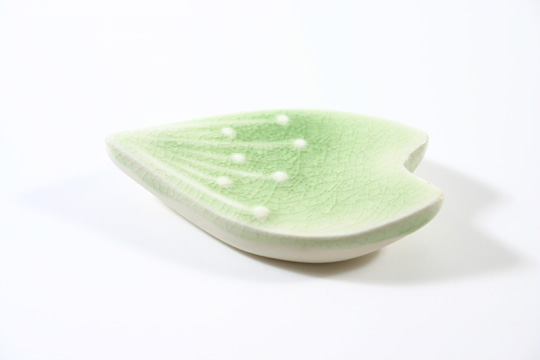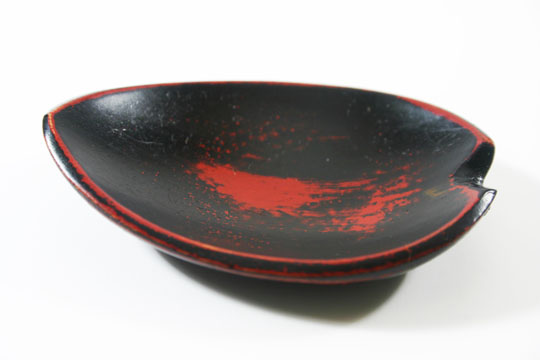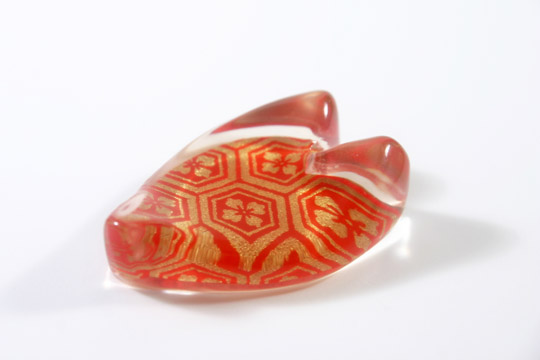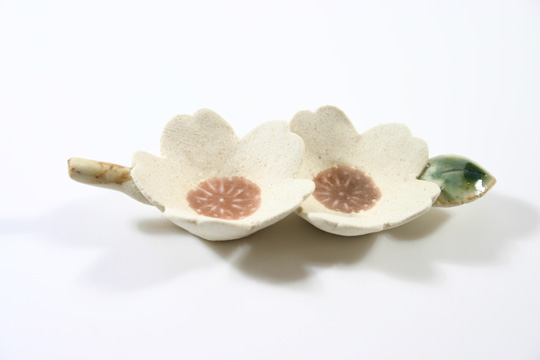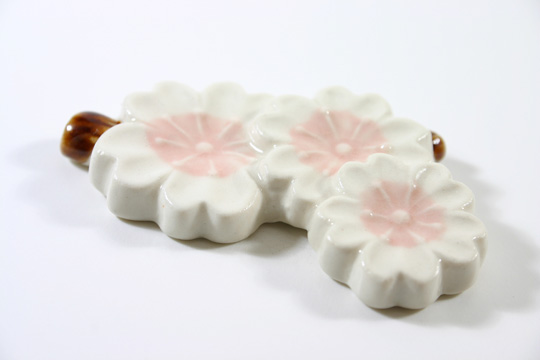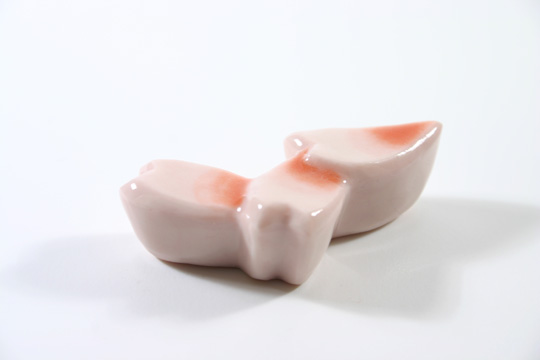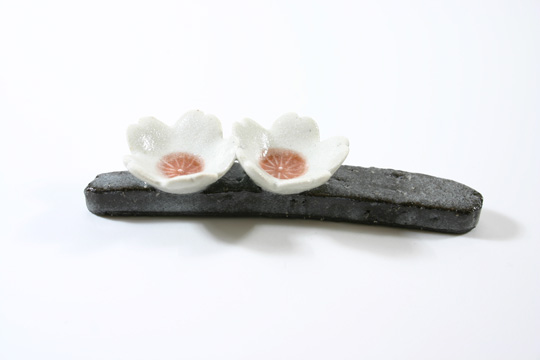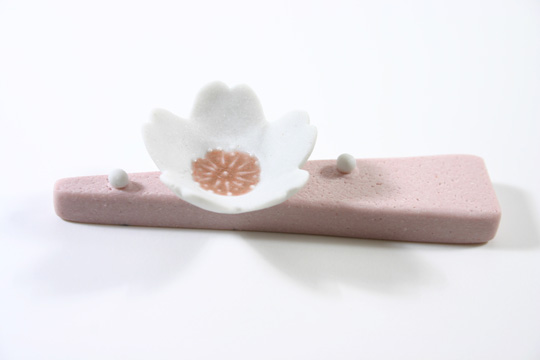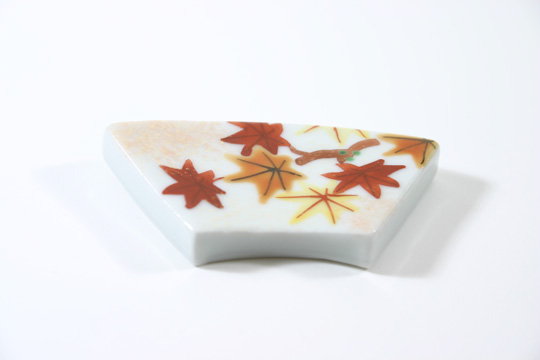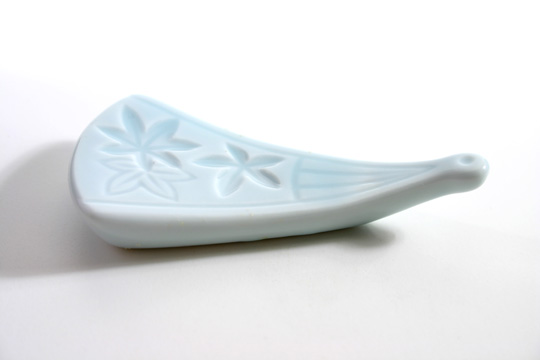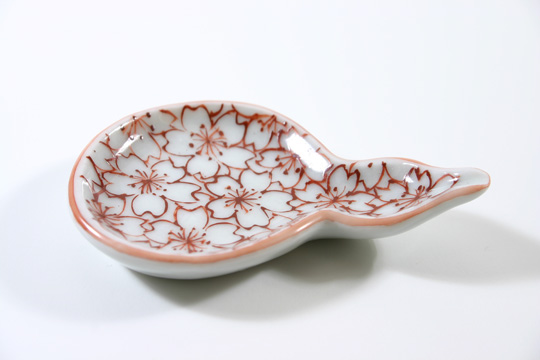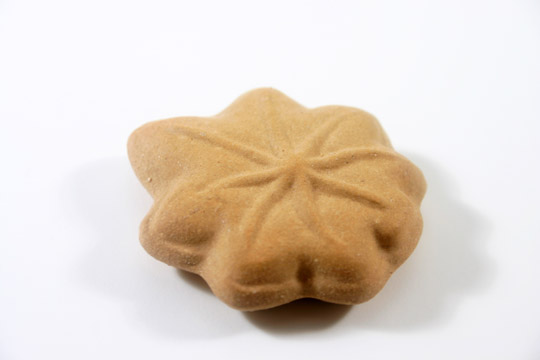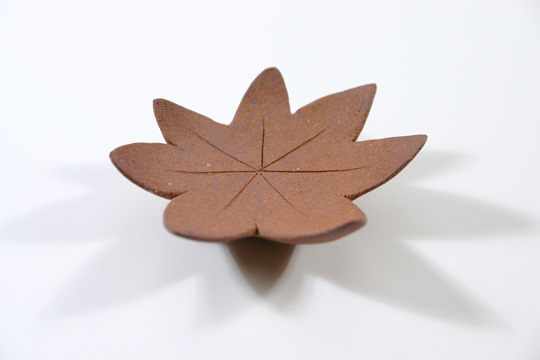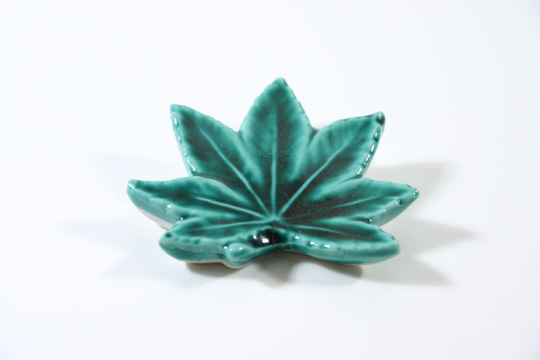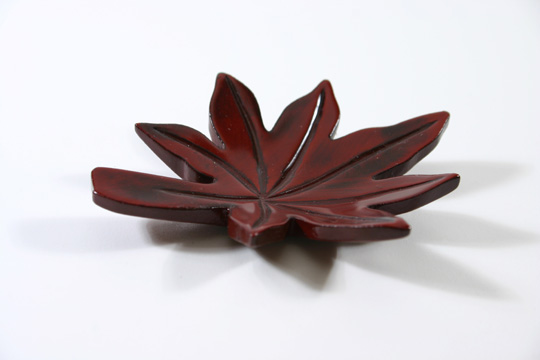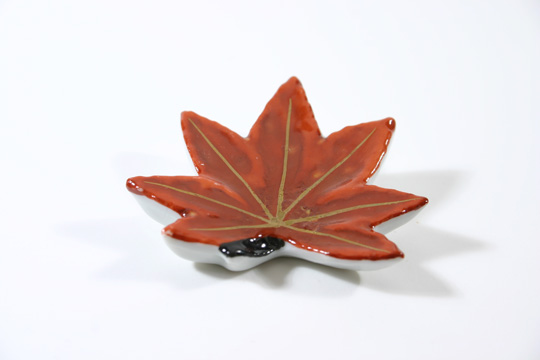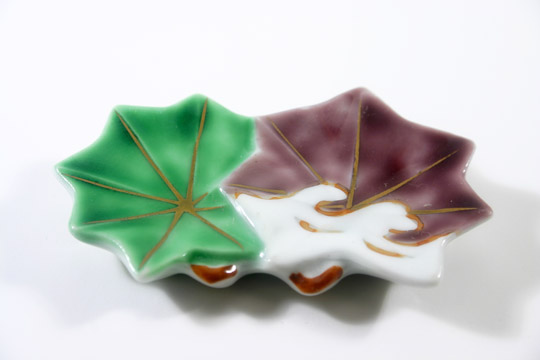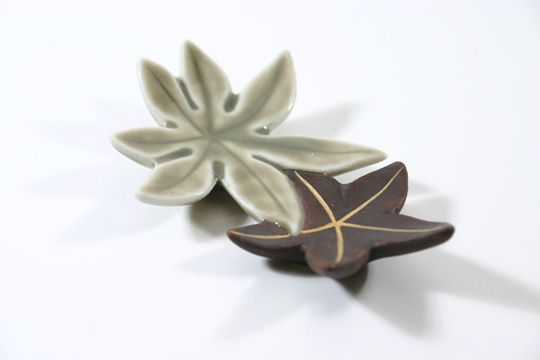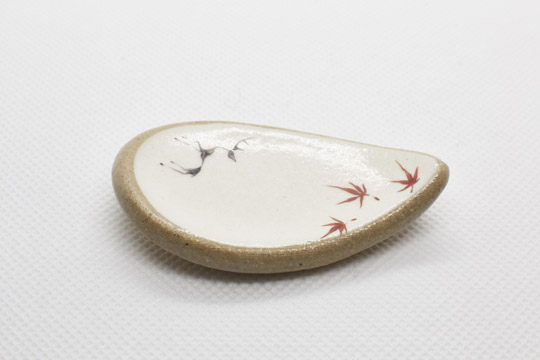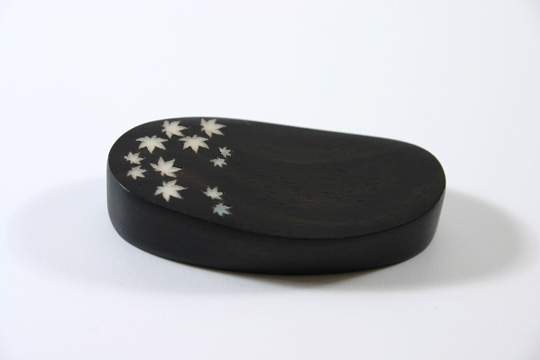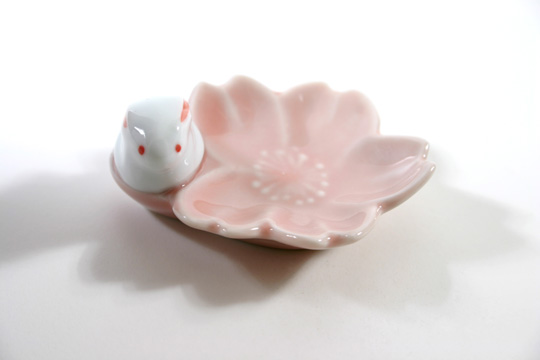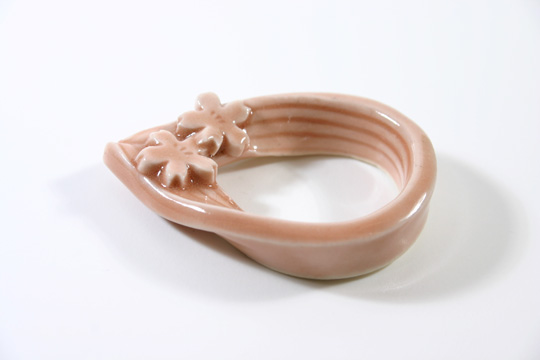
Hill shape, white with red design of cherry blossom and maple leaves
Origin : Japan
Made of : porcelain - potery
Classification : things / shapes
Maker : ?
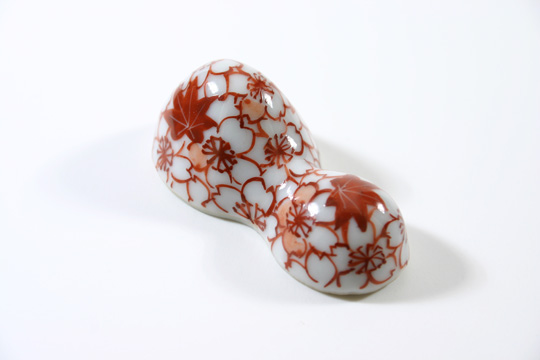


About "Japanese maple" (momiji - 紅葉) :
The Japanese maple (acer palmatum) has been cultivated and selected for centuries by Japanese. It's a small to medium size tree with leaves looking like a little hand (momiji). Because of it's small leaves, momiji trees are often used for bonsaïs.
In autumn, some species turn into a very vibrant red. Like for the cherry blossom, Japanese gather to admire the momiji in temples and parks. Kyoto temples and gardens are famous for their beautiful momiji. The mix between bright red and tender green momiji leaves is a delight for the eyes.

Japanese maples in Kyoto
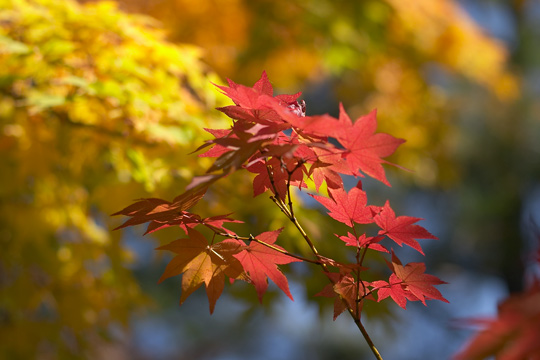
Momiji leaves
About "cherry blossom - Sakura" (sakura - 桜 or 櫻) :
From the Heian Period (794 - 1185), the cherry blossom (sakura) has been revered by Japanese. The word 'Sakura' is believed to be a corruption of the word 'Sakuya' (blooming) from the name of Princess Kono-Hana-Sakuya-Hime who is enshrined on the top of the Mount Fuji.
The cherry blossom is the most important flower for the Japanese. Its brief blooming time and fragility represents the transience of life. The life of the samurai was compared to the short life of the cherry blossom as the samurai was always ready to die for his master.
The 'Sakura' is a very common motif on kimonos, lacquerware, pottery and other decorative items and is one of the favorite theme of artists.
Japanese also admire the beauty of falling petals falling like snow in the spring breeze. People organize picnics with drinks, music and songs. The jox of viewing the sakura is called 'hanami'.
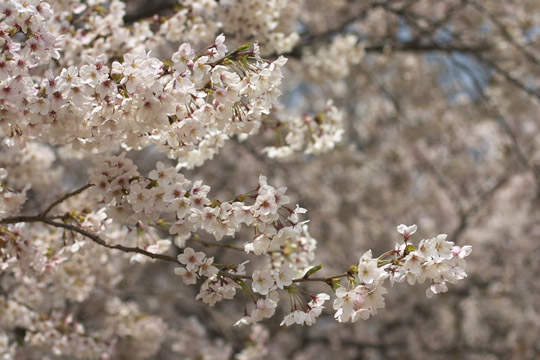
Cherry blossom in Japan
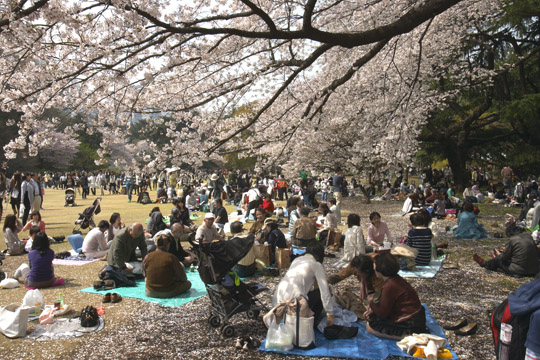
Cherry blossom in Gyoen park - Shinjuku
External links :
http://en.wikipedia.org/wiki/Cherry_blossom
http://en.wikipedia.org/wiki/Sakura_Sakura
http://www.youtube.com/watch?v=1fEsOjRRsx0&feature=player_embedded
